Giro Source MIPS Helmet
Size Tested: Large
MSRP: $120
Blister’s Measured Weight: 397 g / 14.0 oz
Giro Manifest Spherical Helmet
Size Tested: Large
MSRP: $260
Blister’s Measured Weight: 388 g / 13.7 oz
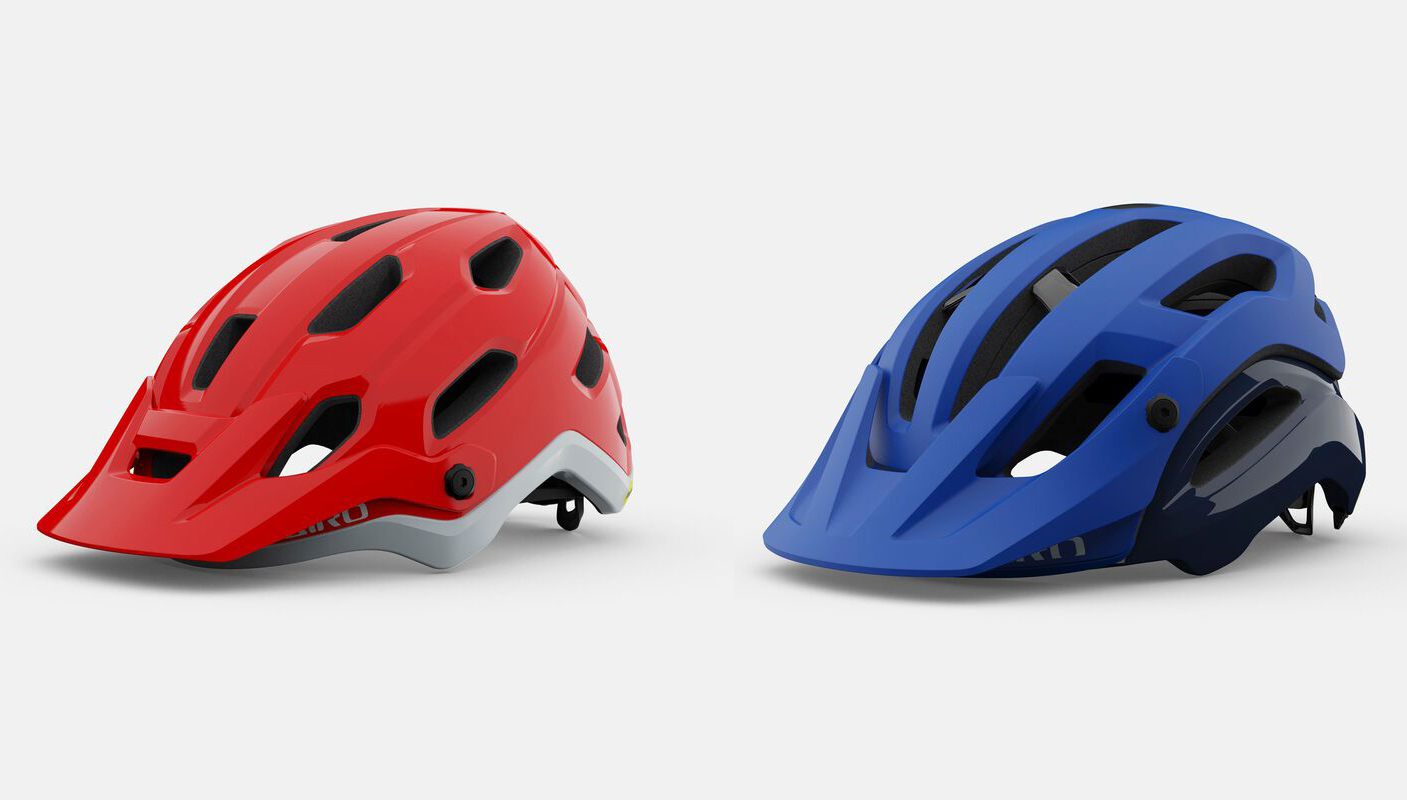
Intro
Prices for high-end mountain bike helmets have been creeping up in recent years, as manufacturers add new features and gizmos. But is it really worth shelling out more money for the top-end model, or will a more basic option do just fine? We’ve been comparing two high-coverage, half-shell Trail / Enduro helmets from Giro to find out, and the answer is going to depend a lot on your priorities.
Giro Source MIPS
Let’s start off with the more basic of the two helmets, the Source, which retails for $120. It’s not the least expensive model in Giro’s line, but costs less than half as much as the Manifest Spherical that we’ll talk about in a minute, and as such, makes for an interesting comparison.
Giro describes the Source as “combin[ing] advanced performance and protection in a rugged, trail-ready design.” As with a lot of modern mountain bike helmets, the Source offers substantial coverage, especially around the back of the head, and a large, adjustable, visor. There’s a conventional dial-based retention and adjustment system at the back of the helmet (Giro calls this version “Roc Loc 5”) and a standard plastic buckle on the chin strap.
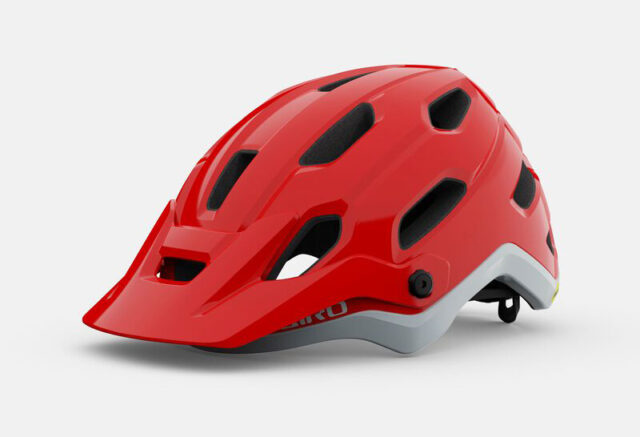
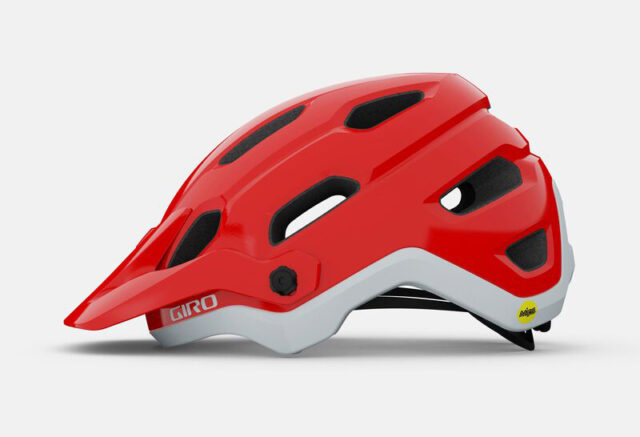
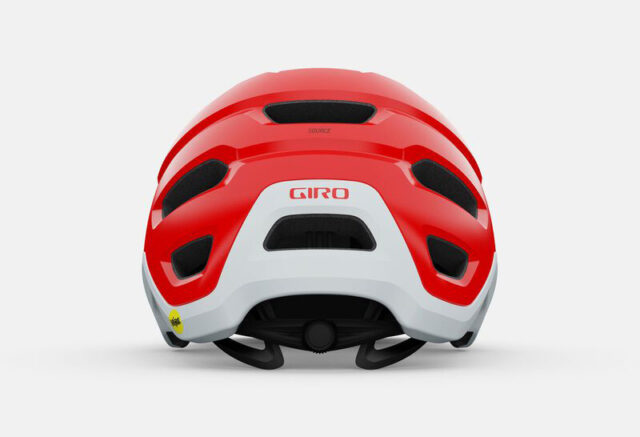
The Source also features the now-ubiquitous MIPS system. For those not familiar, MIPS stands for Multi-directional Impact Protection System, and as implemented in the Source, consists of a thin plastic liner between the interior padding and the shell of the helmet. This allows the helmet to rotate against / around the head, with the goal of mitigating brain injuries that can result from certain impacts, particularly glancing ones at an angle to the outer shell of the helmet.
The Source’s interior padding is removable and washable, and the shell features 17 large vents for airflow. The main structure of the helmet is made of EPS foam, with an in-molded plastic shell — standard stuff all around.
The fit of the Source is a little on the round side of average (by “round” I mean relatively wide, for a given length) but not wildly so — certainly less round than most of the Bell helmets I’ve tried on recently, but a little more so than the Smith Forefront 2. The Source’s coverage is also notably deep. It sits a little lower across the brow than the Forefront 2, and wraps significantly farther down the back of the head. The slightly less-round shape of the Forefront 2 happens to fit my head a little better than the Source, but it’s by no means a “bad” fit — and of course, how either works on my head likely has little to do with how they’ll work on yours. As always, we recommend trying on helmets before buying to ensure the best fit.
The Source’s padding is reasonably comfortable and does a good job of controlling sweat across the brow, but isn’t quite as soft as that in some higher-end helmets. Ventilation in the Source is also about average. At lower speeds, the Koroyd construction of the Forefront 2 does hinder airflow a bit, and the Source vents slightly better, but that advantage dwindles at higher speeds where the Forefront 2 feels similar in terms of ventilation.
The MIPS implementation in the Source is also fairly standard — there’s a little bit of noise and the sensation of some movement from the liner, but both are modest and fairly typical for a MIPS helmet. Overall, the Source is a nicely constructed and solid helmet at a reasonable price — no frills or fancy features, but a well-designed product that works nicely.
Giro Manifest Spherical
If the Source is a solid, functional helmet, why spend more than twice as much on the Manifest Spherical? It won’t be for everyone, but there are some compelling reasons you might want to.
For starters, the Manifest Spherical features a more refined retention system, with a larger, grippier dial that’s easier to turn, especially with gloves on. The rear portion of the retention system that sits against the back of the head adds a foam and rubber gripper, to help the helmet stay put better, and does a nicer job of wrapping around the back of the head and distributing pressure without hot spots. The retention system (“Roc Loc Trail,” in this case) also features some extra adjustability compared to that of the Source. In addition to being able to move the anchor point of the retention system at the back of the helmet, which both helmets feature, the Manifest Spherical adds three positions for the anchor above the temples, giving riders some additional options to fine-tune the fit.
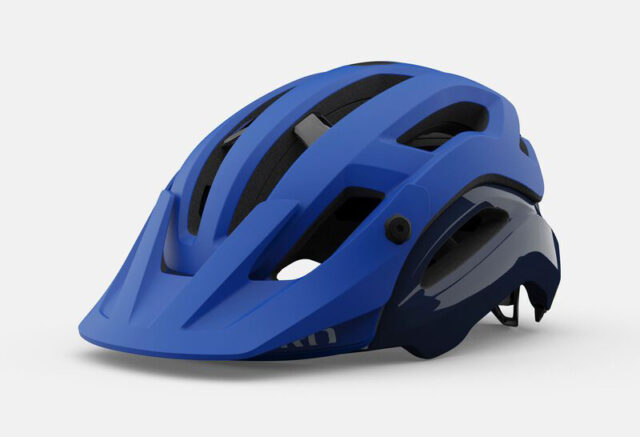
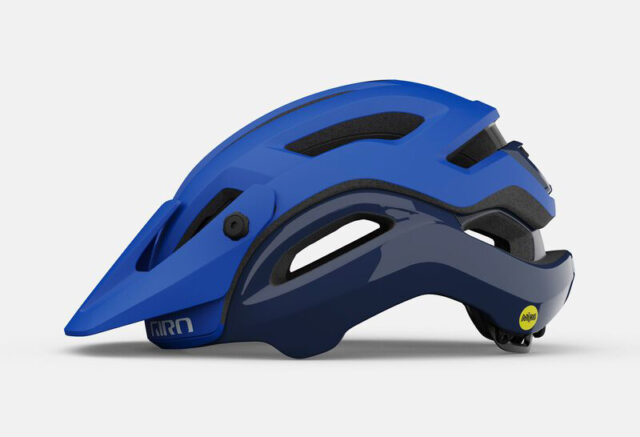
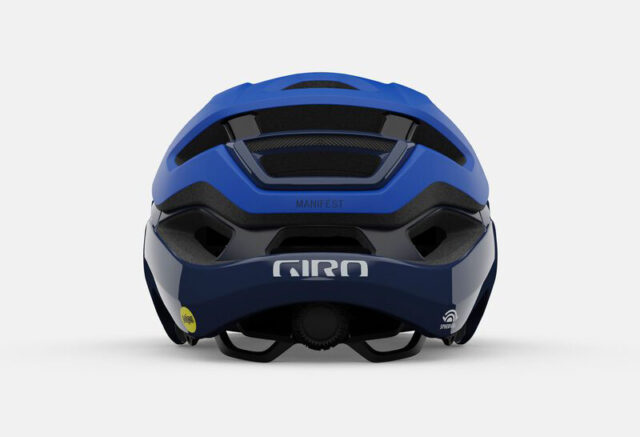
The interior padding in the Manifest Spherical is notably softer than that of the Source, and covers a larger portion of the inside of the helmet. As with the bigger, softer retention system, this helps spread the contact of the helmet out over a larger area to avoid pressure points, and also does a better job of sopping up sweat and keeping it from dripping down the brow. As a, uh, follically-challenged individual who has moved to simply rocking a shaved head, the broader-coverage, softer padding of the Manifest Spherical is a welcome upgrade — with my scalp right up against whatever helmet I’m wearing, I’m particularly sensitive to how soft and cushioned the padding in a helmet is, and the Manifest Spherical is especially good on that front.
The Manifest Spherical also features a magnetic Fidlock closure, in place of the standard buckle on the Source. I can’t say that I’ve ever found the more basic closure style to be terribly cumbersome [insert bumbling “HAS THIS EVER HAPPENED TO YOU?!?!?” infomercial video of a rider flailing to attach a standard buckle], but the Fidlock clasp is easier to line up and close than the typical buckle. This isn’t a terribly important selling point in my book, but is a nice bonus.
The most interesting feature of the Manifest Spherical, however, is its implementation of MIPS. Unlike every other MIPS helmet I’ve used to date, the Manifest Spherical doesn’t feature a plastic liner between the padding and shell of the helmet. Instead, the shell of the helmet is split into two pieces, with a lower-level segment that sits closer to the head, and a second cap over the top of it, with the MIPS mechanism separating the two.

This has a couple of advantages. One, the Manifest Spherical is easily the most comfortable MIPS helmet I’ve ever tried — precisely because it doesn’t have a typical liner, as such. There’s no plastic liner wrapping around the head that can potentially create pressure points or rough edges, and because the movement of the MIPS system isn’t in any sort of contact with the scalp, there’s no sensation of movement like there often is with more conventional MIPS implementations.
Second, it’s totally silent. Or more accurately, I never heard any noise from it on the trail. Hold the helmet in your hand, move the two halves of the shell, and a slight noise is audible. With the Manifest Spherial on my head, though, it totally disappears. I think this is down to a combination of the MIPS mechanism actually producing less noise when it moves, and also there simply being far less movement of the MIPS mechanism during normal use, since the portion of the helmet that moves is so much smaller and lighter. With less mass to hold still, it’s far less prone to bouncing and wobbling as you make your way down the trail.
The two layers also feature different densities of foam, which Giro says helps the Manifest Spherical do a better job of absorbing impacts at a range of different speeds. Both the Source and Manifest Spherical are certified to CPSC and EN1078 standards, but as we’ve talked about before at Blister, the fact that two helmets meet the same standard doesn’t mean that they’re created equal when it comes to protection. Test standards are a minimum set of criteria, and it’s totally possible for one helmet to just scrape over the bar, while another vastly surpasses it.
In terms of fit, the Manifest Spherical is slightly less round than the Source, and wraps down even lower across the brow and over the ears. In terms of shape, it feels fairly similar to the Smith Forefront 2, but with much deeper coverage around the sides and back of the head. For me personally, this actually meant that the tips of my ears occasionally rubbed a little on the bottom edge of the Manifest Spherical’s shell. I wouldn’t have said that I have particularly huge ears, and can’t remember having that particular issue with other helmets in the past. But whether this slight annoyance is down to me secretly being part elf, or the unusually deep coverage of the Manifest Spherical is up for debate. Again, we’d always recommend trying on a helmet before buying.
The Manifest Spherical features two more vents than the Source, bringing the total to 19, and the vents are overall larger and more open than those on the Source. As such, it should come as no great surprise that the Manifest Spherical is notably cooler and more breathable than the Source, as well as the Smith Forefront 2.
Finally, the Manifest Spherical also features rubber grippers to help secure whatever eyewear you might prefer to use on the bike — there’s one large pad across the back of the helmet, to secure a goggle strap, and two more tucked inside two of the vents on top of the helmet, if you want to store a pair of glasses through the vents when not in use.
So Which One Should You Buy?
It depends. First and foremost, you should buy a helmet that fits well, and the Source and Manifest Spherical do fit slightly differently. One might work better for your particular head shape than the other; maybe neither is ideal. Getting a helmet that fits well is critical to having it properly perform and protect your head, and fit should take precedence over feature sets and styling when choosing a helmet.
That said, at least for me, the Manifest Spherical is substantially more comfortable than the Source. Its padding is better refined and softer, and the Spherical MIPS system is both quieter and more comfortable than more conventional implementations that I’ve tried in a number of other helmets, including the Source.
It’s hard to say whether there’s a real difference between the two in terms of protection. Both are certified to the same safety standards, but in absence of the specific test data, it’s impossible to say if one actually fares better than the other. All I can say for sure is that, partway through my testing, I crashed pretty hard in the Manifest Spherical, and it did its job. The helmet was destroyed — that’s why there aren’t any riding photos of me in it — but I walked away without any head injuries.
And that brings me to perhaps the most important deciding factor in choosing a helmet — you should choose a helmet that you can afford to replace. Bike helmets are designed to crumple to absorb impacts, and can only do so to their full potential once. If you have a significant crash, it’s crucial to inspect your helmet for damage, and replace it if there’s any found. Giro does offer a crash replacement policy in the US, which offers riders one discounted replacement helmet per year, in the event of crash damage. But even so, it’s worth thinking about whether you’d be willing to toss your fancy new helmet if you crash in it after a month of riding, as I did with the Manifest. If spending less is going to make that an easier pill to swallow, it might be worth looking for a more modestly priced helmet.

The Bottom Line
The Giro Source is a well-designed mid-level helmet, with a decent fit and feature set, but few flashy bells and whistles. The Giro Manifest Spherical adds a number of clever features, most notably the sleek Spherical MIPS system, which does make a very real difference in terms of comfort and noise level, albeit at a considerable cost. Whether that’s worth paying for is going to be up to you, but both are good options for riders looking for a high-coverage Trail helmet with a medium-round fit.

I’m curious if you’ve ever worn a Giro Syntax and if so which of those two helmets has a more similar fit? Syntax fits my noggin better than any helmet I’ve ever tried, but it’s not full enough coverage for me.